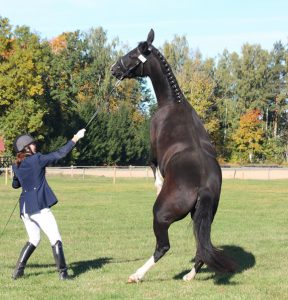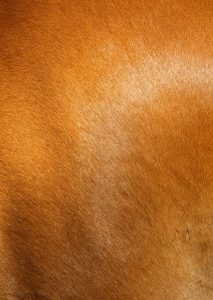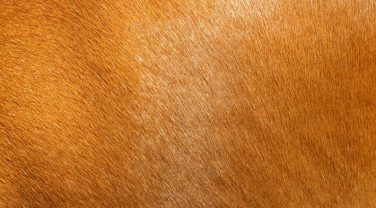Using oil for the safe conditioning of your horse
Use oil to promote weight gain in your horse or pony
Oil is very energy – or calorie – dense and, as such, makes an ideal addition to the ration of horses and ponies that need to put on weight or struggle to maintain weight. Using oil as an energy source has several advantages…
1. Increasing the energy density of the horse’s ration without increasing the overall meal size.
Oil provides about 38MJ/kg compared with barley, at about 13MJ/kg, so it’s not surprising that oil is useful for promoting weight gain in horses. To give a more practical example, 250ml of oil – about a mug full – would provide a similar energy level as 1kg or about one large round scoop of low-energy mix.
One of the main advantages of the energy density of oil is that it can be used to increase the energy content of the horse’s ration without significantly increasing meal size. Horses have a finite capacity to utilise starch form cereal grains and, although traditionally cereals have been used to increase energy intake for working horses and those that need to gain weight, overfeeding them increases the risk of a number of problems, including gastric ulcers and colic. Using a high-oil horse feed allows the amount of cereals used to be reduced or even removed from the ration in some cases.
2. Providing slow-release energy for condition without the fizz.
 Several researchers have investigated the effects of oil- and fibre-based feed rations compared with rations based on starches and sugars on behaviour. One study by Holland and colleagues compared a cereal-based ration supplemented with and without oil and measured spontaneous activity and reactivity. Although there were mixed results, a reduction in spontaneous activity (moving around) and a reduced startle response to the opening of an umbrella were seen when oil was fed.
Several researchers have investigated the effects of oil- and fibre-based feed rations compared with rations based on starches and sugars on behaviour. One study by Holland and colleagues compared a cereal-based ration supplemented with and without oil and measured spontaneous activity and reactivity. Although there were mixed results, a reduction in spontaneous activity (moving around) and a reduced startle response to the opening of an umbrella were seen when oil was fed.
In a separate study, Nicol and colleagues compared starch and sugar rations with fat and fibre rations in growing horses and found that the latter resulted in young horses that appeared less distressed at weaning and calmer in standardised temperament tests. The temperament tests included activities such as testing with a novel object, person or novel activity/handling test such as crossing a bridge.
Generally, the results have been positive, with oil and fibre-based rations promoting calmer behaviour, although there has been some debate as to whether the oil itself was responsible for the improvements or the reduction in starch having an effect. Either way, it would seem sensible to use fibre- and oil-based feeds for condition rather than cereals, particularly if you have a naturally exuberant horse.
3. Suitable for horses and ponies prone to laminitis.
Not all laminitics are overweight and some need help to maintain weight, especially over the winter months or when in harder work. Using sources of digestible fibre alongside supplementary oil is one way to help promote weight gain if necessary. Over the past couple of years, much attention has been given to insulin resistance and its links to laminitis.
In part, feeding practices that involve ‘meals’ of starch and sugar rations are thought to worsen this problem and, even in healthy horses, those adapted to a starch- and sugar-rich diet have been found to have a lower insulin sensitivity compared with those adapted to a fat and fibre diet.
How to feed oil for weight gain
- Oil should be introduced gradually into the ration so that your horse gets used to the taste, as well as to avoid digestive disturbance such as loose droppings.
- Oil should not be fed ad-lib – the maximum suggested levels are 100ml/100kg body weight, so, for example, a 500kg horse should be fed a maximum of 500ml of oil.
- Oil is a hollow or empty ingredient in that it provides plenty of calories but no other major nutrients such as protein, so needs to be incorporated into a balanced ration.
- When the amount of oil in the ration is increased, the amount of Vitamin E supplied also needs to be increased.
Using oil for skin or coat condition
 Oil can also be used in smaller quantities to help promote good skin and coat condition. It is important to remember that oil is very conditioning, so, if you have a good doer, it is best fed in restricted quantities. However, a little can go a long way in terms of promoting coat shine – 25ml is often enough to generate a sleek, glossy coat.
Oil can also be used in smaller quantities to help promote good skin and coat condition. It is important to remember that oil is very conditioning, so, if you have a good doer, it is best fed in restricted quantities. However, a little can go a long way in terms of promoting coat shine – 25ml is often enough to generate a sleek, glossy coat.
When it comes to promoting skin and coat condition, not all oils are the same. The quality of oil tends to be measured with respect to its essential fatty acid profile, particularly with regards to the levels of omega-3 essential fatty acids. Oils that contain a higher proportion of omega-3 essential fatty acids are generally considered to be of a better quality.
The reason for this is that omega-3 essential fatty acids are incorporated into cell membranes and can be released or transformed into prostaglandins. It is recognised that high levels of omega-6, another type of essential fatty acid, are converted to pro-inflammatory prostaglandins, essentially putting the body into an ‘inflammatory’ state that is linked to problems such as arthritis. In contrast, omega-3 is converted to anti-inflammatory substances considered to promote good health.
Oily fish or cod liver oil supplements are commonly recognised as the best source of omega-3 essential fatty acids. However, if you prefer to use oils from plant origins, the next best source of essential fatty acids is hemp oil or linseed oil. Either of these oils can be added to your horse or pony’s ration to keep it looking sleek and shiny all through the winter.



